Hidden over four miles (approximately 6.5 km) beneath the Pacific Ocean, the ship from that year was split in two and rests peacefully on a slope.
A newly identified and surveyed shipwreck is the USS Samuel B. Roberts (DE-413), commonly known as Sammy B.
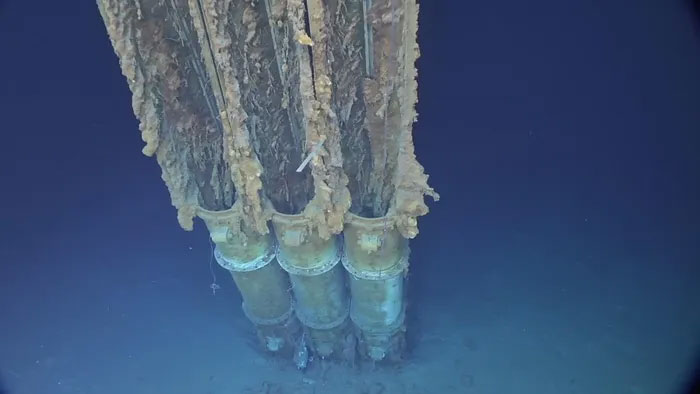
The remains of the ship Sammy B. (Photo: CNN).
Victor Vescovo, an explorer who has previously completed expeditions to the deepest points on Earth, located the shipwreck on June 22.
Sammy B is situated at a depth of 6,895 meters in the Philippine Sea. For comparison, Mount Kilimanjaro stands at 5,896 meters, while the highest permanent settlement in the world, La Rinconada in the Andes of Peru, is at an elevation of 5,100 meters.
Previously, the deepest shipwreck identified and surveyed was the USS Johnston, discovered last year by Vescovo, which lies at a depth of approximately 6,469 meters.
Vescovo and sonar specialist Jeremie Morizet dove to monitor the wreck from end to end. Sammy B had broken into two pieces, resting about 10 meters apart.
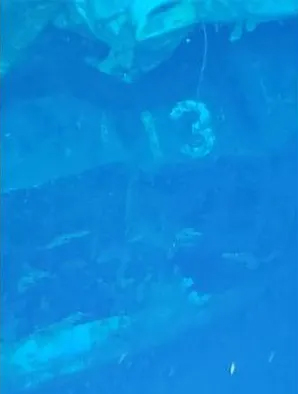
Explorer Victor Vescovo conducted the search. (Photo: CNN).
The Sammy B sank during the Battle off Samar on October 25, 1944, a time when the U.S. Navy defeated a larger Japanese fleet off the eastern coast of Samar Island in the Philippines.
This ship fought against three Japanese battleships, including the Yamato, believed to be the largest battleship ever built. The American vessel had a crew of 224, 89 of whom lost their lives. Captain Robert W. Copeland was one of the survivors.
The ship “fought fiercely even though it was completely outmatched by the Japanese battleships and heavy cruisers it faced,” Vescovo recounted.
“The heroism of Captain Copeland and the crew of Sammy B is legendary in the Navy, and it is an honor to find the final resting place of the ship. I believe this will help close the chapter on the ship for the families of those who perished and for those who think that having a ship disappear into the deep sea, never to be seen again, gives peace to those connected to the ship.”
“Finding the wreck can help provide closure and also bring details about the battle that we may not have known before. As we say, ‘Steel does not rust’.”
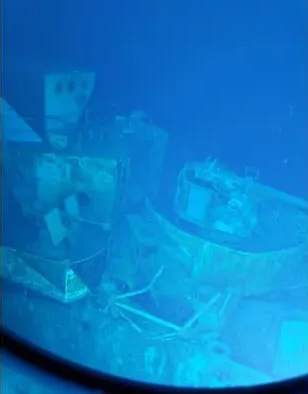
89 out of 224 crew members perished. (Photo: CNN).
Vescovo, founder of the exploration company Caladan Oceanic, along with a team from EYOS Expeditions, conducted six dives over eight days to locate the ship, as well as search for another American vessel, Gambier Bay. Previous records indicated the locations of the ships were inaccurate, but the team was aided by a custom-built solar-powered side-scan sonar system, along with comprehensive research.
Initially, they identified debris from Sammy B – a three-tube torpedo launcher, one of the few pieces of equipment that the sunken ship had. On the final day, they confirmed the wreck of Sammy.
Vescovo called it a “privilege” to find the ship, stating in a statement that pinpointing its location provided the research team an opportunity to “tell the story of heroism and duty.”
He remarked: “In difficult times, it’s important to reflect on those who sacrificed so much, so willingly, in even tougher times to ensure our freedom and right to live.”
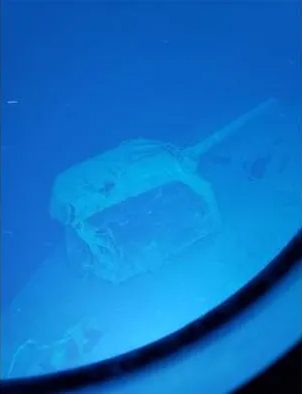
Vescovo called it a ‘privilege’ to discover the ship. (Photo: CNN).
“I am always amazed by the extraordinary courage of those who fought in this battle against truly overwhelming odds – and they won.”
At that time, they were not even sure the expedition would be successful.
“Sammy B was a small military ship, and we weren’t really sure we could find it amid the vast or extremely deep ocean where the ship sank. But with persistence, some excellent historical analysis, and a lot of deep ocean technology and hard work, we were able to find it and bring the great opportunity to tell the remarkable story of Sammy B,” he elaborated.
“It was thrilling, unbelievable to find a shipwreck at the bottom of the deep ocean, in the context of all the challenges faced while trying to locate the wreck. It was a tremendous honor to be the first to see them after they fought nearly 80 years ago.”
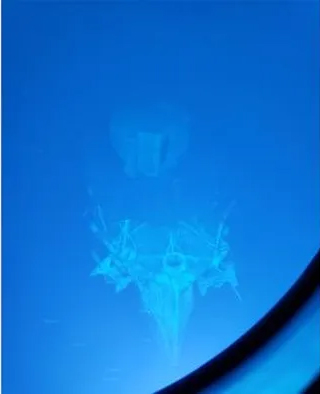
Vescovo’s team conducted six dives to locate the ship. (Photo: CNN).
Kelvin Murray, expedition leader and Director of Exploration Operations & Underwater Projects at EYOS, stated, “As always, there was an incredible and dedicated effort from the entire team – the crew, support team, historians, and other experts. Using a combination of detective work and innovative technology, everyone came together to reveal the final resting place of this valiant ship.”
“It was a challenging, thrilling, and profound expedition, one that honors the ships and sailors from all nations who fought valiantly in this battle. We are all proud of what has been achieved and humbled by what we witnessed.”
The research team also descended below 7,000 meters to search for another vessel – an aircraft carrier known as Gambier Bay – but was unable to locate it. They did not search for another destroyer, USS Hoel, due to a lack of data.
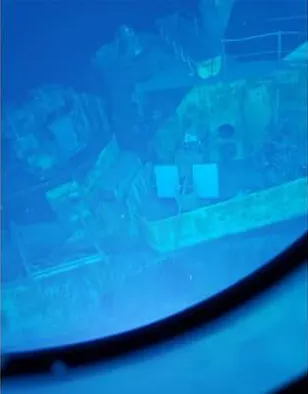
Sammy B may not be the deepest shipwreck found. (Photo: CNN).
However, Sammy B may not be the deepest wreck discovered. The research team believes their new Deep Ocean Search side-scan sonar is the deepest side-scan sonar ever operated on a submersible – typically, they reach depths of up to 6,000 meters, but this has been tested to 11,000 meters, or oceanic depths.
The Caladan Oceanic team plans to deploy it to the seabed next month.


















































